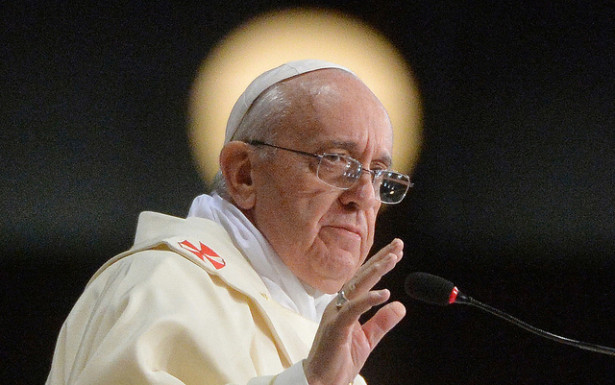
The call issued this week by Pope Francis for a non-military solution in Syria — reinforced by his call to Catholics and all people of good will to gather in local churches around the world on September 7 to pray and fast for a nonviolent resolution to this crisis — powerfully echoes Pope John XXIII’s historic declaration of peace.
As I wrote on its 50th anniversary in April, John XXIII’s Pacem in Terris — Peace on Earth — was atypical in many ways, not least because it was intended not only for Roman Catholics (the audience for which a papal encyclical was traditionally intended) but to persons of good will everywhere. If peace was to be achieved, the letter implied, it naturally must be the work of everyone everywhere, and so the search for this elusive potential must include all of us. Thus the document was not weighted down with shrill dogma or theological obscurities. It was, instead, a gentle but determined plea for the world to come to its senses.
Pacem in Terris was a love letter to humanity, but one that sprang, not from a sentimental naïveté or a groundless optimism, but from a profound meditation on the horrendous dangers that the Cold War in those days posed to all life, with which the pope had grappled in a direct way during the then-recent Cuban Missile Crisis. With the discovery in October 1962 by the United States that the Soviet Union had installed nuclear missiles in Cuba, the United States and U.S.S.R. found themselves on the brink of full-scale nuclear war. There was a profound sense of inevitability as the showdown escalated. At virtually the last moment, the impasse was broken and a deal was worked out, with the Soviet Union withdrawing its missiles and the United States secretly agreeing to withdraw its missiles along the border in Turkey. The world breathed a profound sigh of relief.
As the historical record now shows, Pope John XXIII played a profound role in creating the conditions for an 11th hour agreement. The pope actively took part in back-channel communications, in which he agreed to deliver on Vatican Radio an urgent call for both parties to pull back from the edge. As historian Ronald J. Rychlak puts it, “With his plea, Pope John XXIII had given [Soviet Premier] Khrushchev a way out. By withdrawing now, he would be seen as a man of peace, not a coward.”
In the months that followed, the pope began work on Pacem in Terris. This historic text has borne much fruit in the half century since it was issued.
Pope Francis has now followed up his initial call to action with a pointed letter delivered to the heads of state meeting during this week’s G20 meeting in Russia. It is heartening to see this vision of nonviolent options both being dramatically translated into a call for worldwide action and, at the same time, forming the substance of an urgent and concrete message directed to the key policymakers, including President Obama, who is preparing to go ahead with military strikes in Syria within days.
In the spirit of the precedent of Pope John’s peacemaking during the Cuban Missile Crisis, I imagine Francis working tirelessly behind the scenes, offering his good offices to the actors on all sides of this conflict to negotiate a just and peaceful settlement.
I even dream of the pope audaciously traveling to Syria and staying put, in the spirit of spiritually grounded, nonviolent action, until this deadlock is broken and the potential for peace is established.
But I most vividly envision millions of people around the globe gathering this Saturday and beyond to say with one voice, “There are nonviolent options — let’s use them!”
We cannot predict what will transpire in the coming days. But, perhaps, the world will once again breathe a profound sigh of relief if millions of people of faith and conscience, including the pope, mobilize their spiritually-rooted people power to help create the conditions for pulling back from the brink — and for beginning to establish the foundations for a more just and nonviolent outcome.
